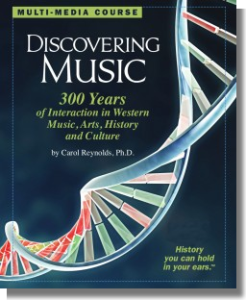 Every semester we receive questions asking how students should approach the “Putting It All Together” sections in the Discovering Music text. Many of you know that each unit contains a set of projects organized around three principles: traditional academic research; exercises in comparison and contrast; and inquiries requiring local exploration.
Every semester we receive questions asking how students should approach the “Putting It All Together” sections in the Discovering Music text. Many of you know that each unit contains a set of projects organized around three principles: traditional academic research; exercises in comparison and contrast; and inquiries requiring local exploration.
Students find plenty of projects to choose from—too many, one could argue! Indeed, when we wrote the course in 2009, we presented a variety of projects per unit, so that students could have choices. But even with judicious choosing, the projects loom large, especially for individuals accustomed to progressing methodically through course material.
Hence, the questions we receive: “How many projects per unit should a student do?” “How extensive should each project be?” “Can we skip and choose projects as we wish?”
The answer to these inquiries is summed up in two words: choice and flexibility. Some students prefer to do one project per unit and vary the types of projects across the units. Others find that one particular type of project best suits their “learning-styles” (to use a modern term) and choose only these. Some decide to complete a project every other unit, or just in those units of particular interest. And still others like to band together and treat the projects as group projects, discussing them orally, or writing them up based on group discussions.
All of these methods work, and they will yield good results. From our perspective, the most important things are 1) stay creative; 2) do not let the projects overwhelm a student’s enthusiasm; and 3) keep progressing through the units and don’t get bogged down.
Above all, keep the main goal: to get through all seventeen units. Unit 17 represents the culmination of the course and its material is critical. Here the student will encounter a cavalcade of trends streaming together, both harmoniously and in a grand clash, significantly shaping music, art, and popular culture in the 20th-century. Without studying the full breadth of the course and, in particularly, listening to the music in the final unit, a key focus of the course is lost.
So, keep the projects in perspective. Put them to their best use. And do not let them become impediments in an otherwise smooth journey of Discovering Music.



